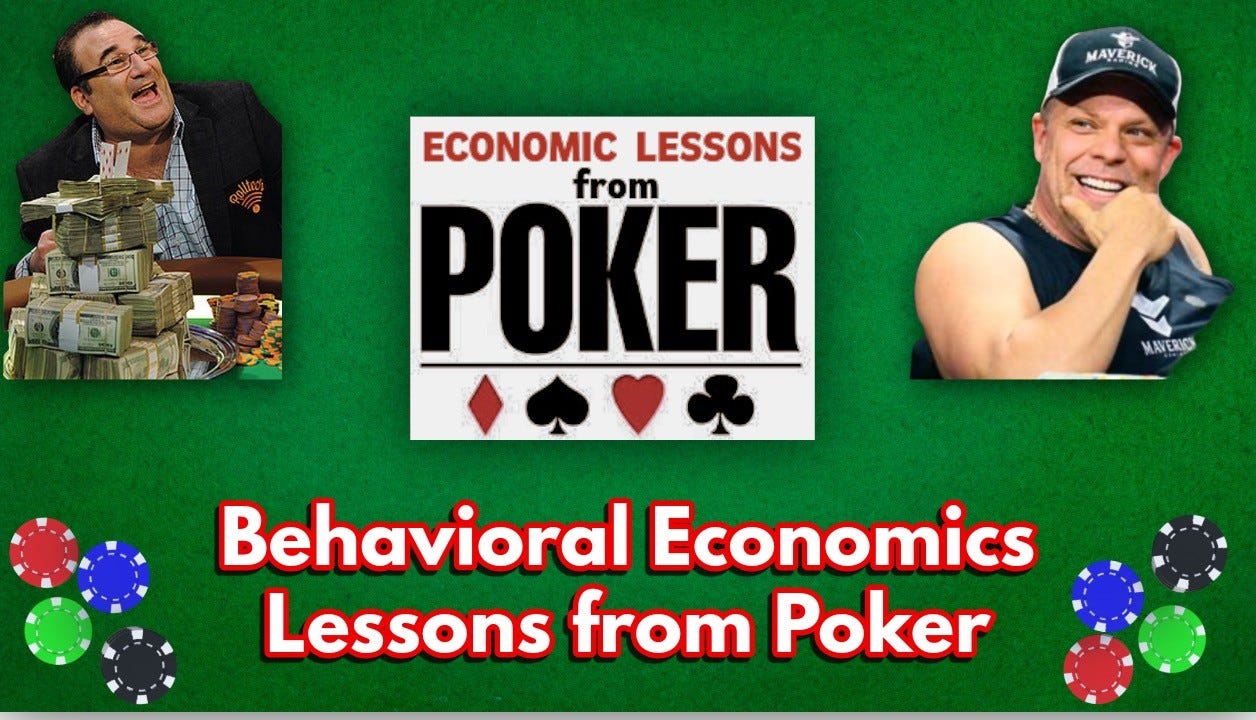Poker and Behavioral Economics
Lessons from the felt!
Poker isn’t just a game of cards—it’s a masterclass in decision-making, psychology, and economics. With the World Series of Poker in full swing, I sat down with my friend and fellow economist Dr. Eric Dunaway (Wabash College) to explore how poker illustrates ideas in behavioral economics.
In the video, we break down how poker players actions can give us insight into behavioral economics.
Among the lessons we dive into:
The Sunk Cost Fallacy: Why losing one hand shouldn’t affect your next decision—but often does.
Prospect Theory: Why losses feel worse than gains feel good, and how that shapes risky behavior at the table.
Commitment Devices in Action: Satellite tournaments that force winners to enter bigger events show how removing choices can help people make better long-run decisions.
Revealed vs. Stated Preferences: A wild $2 million weight-loss bet between two pros reveals what people really want when the stakes are high.
We even share personal stories, like gym-related incentives embedded in a syllabus and the odd psychology of “winning” by breaking even.
If you're curious how economics plays out in everyday decision-making—or just enjoy poker and want to justify watching it as educational—this video is for you.
Key Concepts Covered:
Behavioral economics
Tilting and emotional bias
Risk-taking after losses
Marginal analysis
Commitment devices like StickK
The hidden power of incentives


